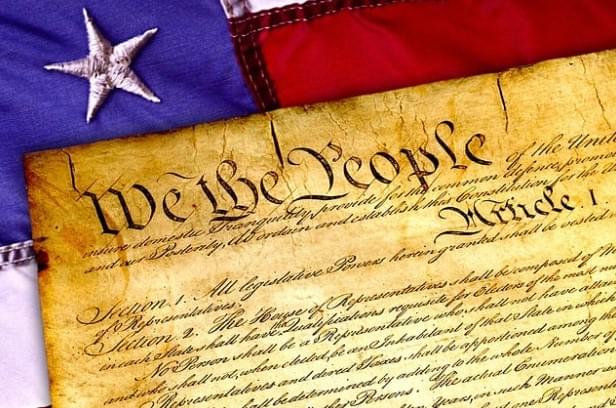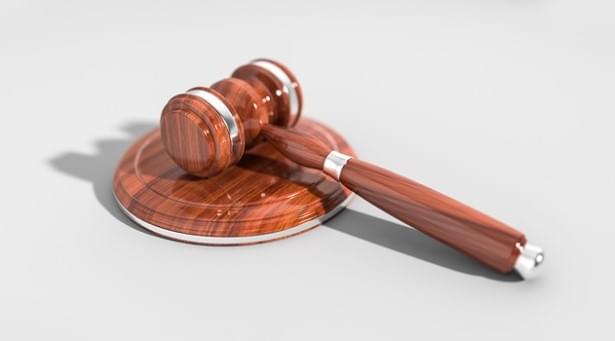The United States Constitution is the backbone of the nation, serving as the fundamental source of law and governance. It is the document that outlines the rights and freedoms of individuals while also establishing parameters and limitations. This article aims to delve into how the Constitution safeguards and limits individual rights, examining the key principles, the judiciary’s role, and some ongoing controversies and debates surrounding constitutional rights.

Understanding the Constitution: A Brief Overview
To fully comprehend how the Constitution safeguards and limits individual rights, it is essential to have a basic understanding of its formation and structure. The Constitution was drafted in 1787 by a group of delegates known as the Founding Fathers. They sought to create a framework for a new nation that would provide a balance between a strong central government and the protection of individual liberties.
It is important to note that the Constitution has been amended over time to reflect society’s changing needs and values. The first ten amendments, known as the Bill of Rights, were added shortly after the Constitution’s ratification and have remained the cornerstone of individual rights and protections in the United States.
The Making of the Constitution
The Constitution’s formation was a complex process that involved compromise among the delegates. They debated and negotiated over various issues, including representation, federalism, and individual rights. The end result was a document that laid out the structure of the federal government and its relationship with the states, as well as the protections and limitations on individual rights.
One of the key debates during the Constitutional Convention was the issue of representation. Small states were concerned about being overshadowed by larger states, while larger states wanted their population to be adequately represented. The compromise that emerged was the creation of a bicameral legislature, with a House of Representatives based on population and a Senate with equal representation for each state.
Another contentious issue was the balance of power between the federal government and the states. Some delegates favored a strong central government, while others worried about the potential for tyranny. The compromise was federalism, a system that divided power between the federal government and the individual states. This division of power helps protect individual rights by allowing for a degree of local autonomy.
Key Principles of the Constitution
The Constitution is based on several key principles that serve to safeguard and limit individual rights. These principles include the separation of powers, federalism, and checks and balances. The separation of powers divides the government into three branches – the legislative, executive, and judicial – ensuring that no single branch becomes too powerful.
The legislative branch, also known as Congress, is responsible for making laws. It is divided into two chambers, the House of Representatives and the Senate, to provide a system of checks and balances. The executive branch, led by the President, is responsible for enforcing laws. The people elect the President, and he/she serves as the head of state and commander-in-chief of the military. The judicial branch, headed by the Supreme Court, interprets the laws and ensures their constitutionality.
Federalism, on the other hand, distributes power between the federal government and the individual states. This system helps protect individual rights by allowing for a degree of local autonomy. The states have their own governments and can pass laws that are specific to their needs as long as they do not violate the Constitution.
Lastly, checks and balances enable each branch of government to monitor and limit the powers of the others, preventing any one branch from becoming tyrannical. For example, the President can veto legislation passed by Congress, but Congress can override the veto with a two-thirds majority vote. The Supreme Court can declare laws unconstitutional, but Congress can propose amendments to the Constitution to overturn those decisions.
In conclusion, the Constitution is a living document that has evolved over time to protect and limit individual rights. Its formation involved compromise among the Founding Fathers, resulting in a framework that balances a strong central government with the protection of individual liberties. The key principles of the Constitution, including the separation of powers, federalism, and checks and balances, work together to ensure that no single branch or level of government becomes too powerful, thus safeguarding the rights of the American people.

The Constitution as a Safeguard of Individual Rights
One of the primary ways the Constitution safeguards individual rights is through the Bill of Rights. These ten amendments explicitly spell out certain protections and limitations on the government’s power, ensuring that individuals maintain certain fundamental freedoms.
The Bill of Rights: An In-depth Look
The Bill of Rights guarantees various individual rights, including freedom of speech, religion, and the press, the right to bear arms, protection against unreasonable searches and seizures, and the right to a fair trial. The Constitution enshrines these rights to safeguard individuals from potential government overreach.
How the Constitution Protects Freedom of Speech, Religion, and Privacy
Freedom of speech, religion, and privacy are some of the most cherished rights protected by the Constitution. The First Amendment prohibits the government from infringing on individuals’ freedom of speech, ensuring they can express their opinions and ideas without fear of censorship or punishment. Similarly, the First Amendment guarantees the freedom of religion, allowing individuals to practice their faith or choose not to practice any religion at all.
Privacy, although not explicitly mentioned in the Constitution, has been interpreted by the courts as an essential right. The Fourth Amendment protects individuals from unreasonable searches and seizures, ensuring their privacy is respected. Furthermore, the Ninth Amendment states that individuals have rights beyond those explicitly listed in the Constitution, including the right to privacy.
The Role of the Judiciary in Upholding Constitutional Rights
The judiciary plays a critical role in interpreting and upholding individual rights as outlined in the Constitution. The Supreme Court, the highest court in the land, has the power to determine the constitutionality of laws and government actions. Through landmark cases, such as Brown v. Board of Education and Roe v. Wade, the Supreme Court has shaped the interpretation of constitutional rights and expanded individual protections.
Limitations Imposed by the Constitution on Individual Rights
While the Constitution safeguards individual rights, it also imposes certain limitations on those rights to maintain public safety and protect the common good.
Balancing Individual Rights and Public Safety
In certain situations, individual rights may be limited to ensure public safety. For example, the government has the authority to restrict freedom of speech if it poses a clear and present danger or incites violence. Similarly, the Second Amendment’s right to bear arms has limitations in preventing individuals from possessing certain firearms that may endanger public safety.
The Constitution and Limitations on Freedom of Speech
Freedom of speech, although protected by the First Amendment, is not an absolute right. Certain types of speech, such as libel, slander, and obscenity, are not protected and can be subject to legal limitations. Additionally, speech that incites violence or poses a threat to national security may also be restricted.
Privacy Rights: Where the Constitution Draws the Line
While recognized by the courts, the right to privacy is not without limitations. Law enforcement agencies, for instance, can conduct searches and surveillance with proper legal authorization. The delicate balance between individual privacy and the government’s need for security is an ongoing debate in modern society.
Controversies and Debates Surrounding Constitutional Rights
The Constitution and its interpretation have long been controversial and debated. Two prominent areas of contention revolve around gun control and privacy rights.
Gun Control and the Second Amendment
The Second Amendment grants individuals the right to bear arms. However, the interpretation of this amendment and its application to modern society has been fiercely debated. Advocates argue for stricter gun control laws to prevent acts of violence, while opponents believe that such laws infringe upon their constitutional rights.
The Ongoing Debate Over Privacy and Surveillance
In the digital age, privacy rights face new challenges due to advancements in technology and the proliferation of surveillance. The government’s ability to collect and access individuals’ personal data raises concerns about privacy violations. Debates center around striking the right balance between national security and protecting individual privacy rights. PPGS ™ aims to help consumers understand their individual data privacy rights resulting in a more safe and fair digital world.
The Constitution in the Modern World: Evolving Interpretations
As society evolves and new challenges emerge, interpreting the Constitution’s protections and limitations also evolves.
The Impact of Technological Advancements on Constitutional Rights
The rapid advancement of technology has brought forth new challenges to individual rights protections. Questions arise regarding the application of the Fourth Amendment to digital surveillance, the right to privacy in the age of social media, and the limits placed on government access to personal information.
Future Challenges for the Constitution and Individual Rights
The Constitution will undoubtedly face future challenges as society continues to evolve. Issues such as artificial intelligence, genetic privacy, and the balance between national security and individual liberties will shape the ongoing debate on the scope and limitations of constitutional rights.
In conclusion, the Constitution serves as both a safeguard and a limitation on individual rights. Through its key principles, the protections outlined in the Bill of Rights, and the active role of the judiciary, the Constitution aims to strike a delicate balance between individual liberties and the needs of society. However, ongoing controversies and evolving interpretations remind us that the Constitution is a living document that is capable of adapting to the ever-changing landscape and needs of the modern world.
